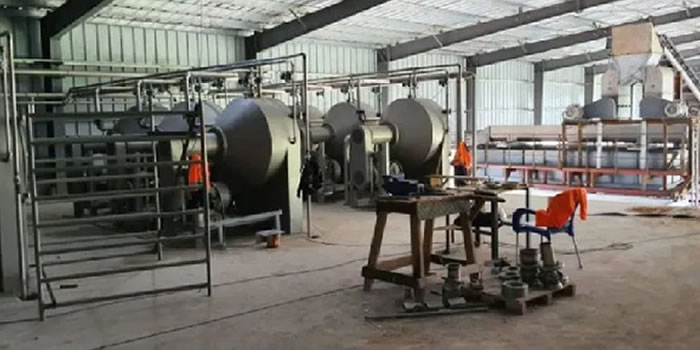

Location and Size
The Municipality is located in the eastern part of Ashanti Region and lies between latitude 60 30’ North and 70 30’ North and longitude 00 15’ West and 10 20’ West. It covers a land area of 1,160 sq. km with an estimated population of 169,976 in 2010 (projection from 2000 Population Census). The Municipality shares boundaries with Sekyere East on the north, Kwahu South on the east, Asante Akim South on the south and Ejisu-Juaben on the west.
Relief and Drainage
The topography of the Municipal is generally undulating. From the North, the land rises gently to heights between 305 and 610 meters and is interrupted by a stretch of the Akwapim-Mampong Range, which is between 610 and 762 meters. Beyond this range is the southern part of the Municipal covered by highlands ranging between 305 and 610 meters. Lowlands between 152 and 305 meters are found in the northern portion where the land slopes gently towards the Volta Lake.
The Akwapim-Mampong Range serves as a watershed for the numerous rivers and streams, which drain the Municipal. Prominent among them is the Anum to the West, Owerri to the South, Oyin to the East and Onwan and Egyan in the north. The steep slopes at Kyiriyawa near Hwidiem and at Onyem have created waterfalls, which are yet to be developed as tourist sites.
Climate
The Municipal lies within the semi-equatorial belt characterised by double rainfall maxima occurring in July and November; the first rainy season from May to July and the second from September to November. The dry harmattan season occurs between December and April and is associated with drought conditions. Streams dry up during this period. Temperature is found to be uniformly high all year round with a mean annual temperature of 26oC.
Vegetation
The Municipality lies within the moist semi-deciduous forest belt. The major vegetation types are:
- the Open Forest covering 576 sq. km over the highland areas
- the Closed Forest covering 230 sq. km on the range and
- the Wooded Savannah covering 246 sq. km.
These varieties consist of different species of tropical woods such as Wawa, Ofram, Sapele, Sanfina, Okyere (Kofo), Onyina, Kyenkyen, Otie and Yaya, which have high economic value. Most of the original forest in the district has degenerated into secondary forest and grassland due to indiscriminate felling of trees, bush fire and poor farming practices such as shifting cultivation, bush fallowing, slash and burn, and bush burning for fresh forage for cattle feeding by the Fulani herdsmen. In some parts of the district, which fall within the Afram Plains, the semi deciduous forest is gradually degenerating into interior wooded savanna due to intensive farming activities. To maintain the microclimate, parts of the forests in the Municipal have been reserved.
These are:
- The Bandai Hill in the North which stretches for 160.8 sq. km
- The North Bandai Hills in the West with reserves of 72.8 sq. km and
- Onyemso and Dome River Reserves with 15.5 sq. km coverage.
Under the Collaborative Forest Management System reforestation of the degraded forest are underway in the Bandai Hill reserves at Nyinatokro, Abrewapon, Bebome and Nyamebekyere. The forest reserves are a source of income to private timber companies, traditional authorities, the Municipal and individuals. Timber, foodstuffs, raw materials etc are obtained from the forest for industrial and domestic use. Most of the forest belts are rich with delicacies such as snails and mushroom, which are in season between March and April. However, most of them have gone into extinction due to rampant bush fires. There are prospects for mushroom and snail farming in the forest areas.
Soils
Two major soils have been identified in the Municipality; the Forest Ochrosol and Savanna Ochrosol. The Forest Ochrosol is fertile and supports cereals, oil palm, cassava, plantain, cocoa and vegetables. The Savanna Ochrosol is well leached, richly supplied with organic matter and is good for the cultivation of yam, maize, cassava, groundnut and vegetables. Soil types one to seven are of the Forest Ochrosol and soil eight is of the Savanna Ochrosol. The relationships between soil types, geological structure, vegetation and crops in the District are also illustrated in the table.
Geology and Minerals
The natural resources that abound in the Municipal are mainly minerals and forest products as well as water bodies. Mineral resources include gold deposits found in the metamorphosed lava, stretching from the Konongo-Odumase area to Juansa, and also the strip from the Kyekyewere to Pekyerekye. Other gold bearing rocks include Granite, Biotite and Muscovite found at Wioso area.
The underlying rocks which form the geological base of the district include:
- The Praaso-Dwease- Akutuase stretch is underlained with Granite, Biotite, and Muscovite.
- The Konongo-Juansa area is made up of Metamorphosed lava, pyrodestic rock, quartzites, Phyllites, grits, conglomerate and schist.
- The Adiembra-Kyekyewere is underlain with Tuffs, and Greyoals. The same geological base is also found in the Agogo- Hwidiem area, while the Quartzites, Phyllites, Grits, Conglomerate and Schist, which is common in the Konongo, Juansa areas can also be found at the Pataban, and Awanie area.
- Sandstone is found in the Ananekrom -Bebome area, while Shale and Mindstone are found at Onyemso and Sratoase area.
The geological structure shows that, the Municipal has not got a uniform geological structure, apart from the Ananekrom – Bebome areas, where the geological base is mostly Sandstone.
Date Created : 11/28/2017 3:27:41 AM










 facebook
facebook
 twitter
twitter
 Youtube
Youtube
 +233 593 831 280
+233 593 831 280 0800 430 430
0800 430 430 GPS: GE-231-4383
GPS: GE-231-4383 info@ghanadistricts.com
info@ghanadistricts.com Box GP1044, Accra, Ghana
Box GP1044, Accra, Ghana